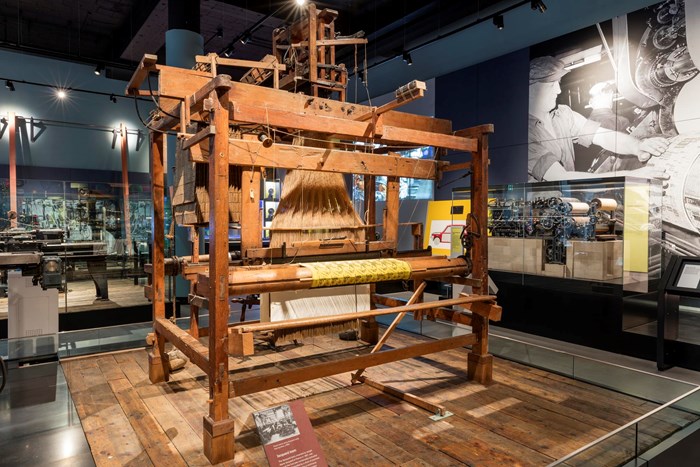Standing in the basement of an old college building, looking at a collection of 19th-century weaving machinery, and in one moment the entire history of computing, even to this day in 2017 came to me.
It was 1990 and I was attending the Philadelphia College of Textiles and Science (now Philadelphia University). As a favor to a professor, my girlfriend (now my wife) and I picked up a donated weaving machine and we delivered it to the basement of one of the main buildings, Hayward Hall.
Surrounding us was an amazing collection of old fabric making equipment dating back to the 19th century. I noticed a Jacquard weaving machine with some yellowing old punch-cards halfway fed through a mechanical reader. In an amazing bit of mechanical engineering, this machine could mechanically, interpret the “on” and “off” instructions on a punch card to consistently reproduce a woven pattern on fabric.
I remembered from a history of computing lessons that IBM adapted the use of punch cards sometime in the 1950s. I even got some brief exposure to them myself in the 1970s, as some legacy equipment had yet to be replaced.
What amazed me here, in examining the cards that the loom used, was that the cards hadn’t really been changed much for when they were adapted for computers. They still had the same rows of eight dots (eventually there would be more than 8), punched or not punched. These were a physical representation of 8 bits to one byte.
What amazed me here, in examining the cards that the loom used, was that the cards hadn’t really been changed much for when they were adapted for computers. They still had the same rows of eight dots (eventually there would be more than 8), punched or not punched. These were a physical representation of 8 bits to one byte.
This constant is the same today, in every computing device from supercomputers to iPhones. Even though our chips got expanded to 16, 32, 64 and 128 bits, etc. All of these are still multiples of the original eight.
This was still not the moment of revelation. It was when I saw the manual device that the operators used to punch the cards that gave me the biggest surprise. The operator of the manual punch machine would sit on a simple metal stool, and feed the cards through the punching mechanism. The operator would grip two metal handles in front of them, that were shaped like small motorcycle handlebars. The operator's fingers would rest on the eight buttons above the handle with the thumbs below. The operator would press the appropriate buttons for the “ons” and “offs” for the pattern, then a foot pedal provided the actual punch of the holes.
This simple 19th-century punching machine has provided us with the basic architecture of our modern computing age. All because of the shape of our hands fitting into a machine to punch cards for a fabric weaver.




No comments:
Post a Comment